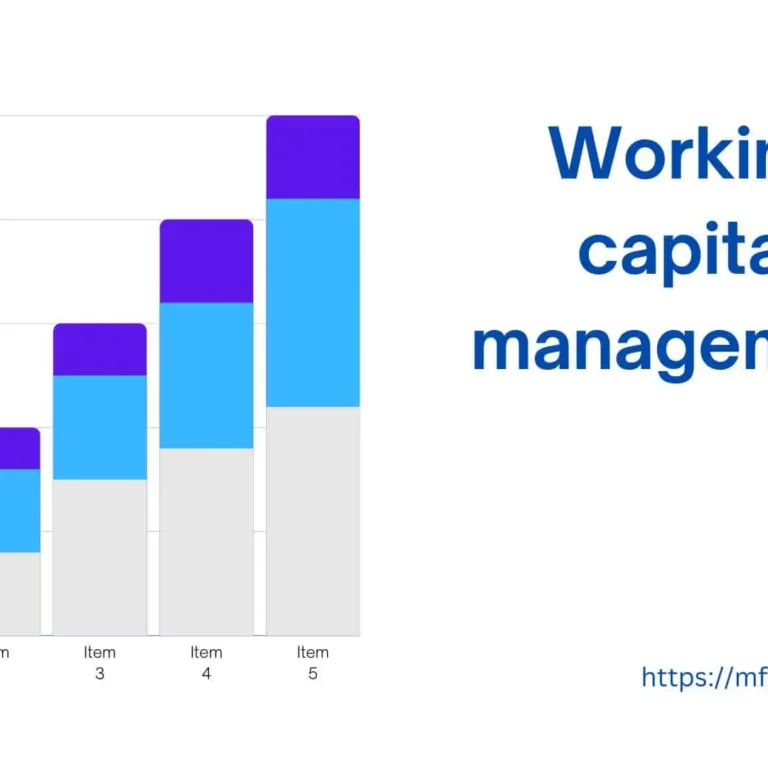Introduction
Performing a SWOT analysis is a valuable tool for financial decision-making as it provides a structured framework for evaluating the strengths, weaknesses, opportunities, and threats associated with a particular decision or situation. A SWOT analysis enables organizations to assess internal factors (strengths and weaknesses) and external factors (opportunities and threats) that can impact financial outcomes.
The strengths and weaknesses analysis focuses on the internal aspects of an organization, such as financial resources, expertise, processes, and infrastructure. Identifying strengths helps leverage advantages while recognizing weaknesses enables proactive measures for improvement.
The opportunities and threats analysis examines the external environment, including market trends, competition, economic factors, and regulatory changes. Identifying opportunities allows organizations to capitalize on favorable conditions while recognizing threats helps anticipate risks and develop mitigation strategies.
By conducting a SWOT analysis, financial decision-makers gain a comprehensive understanding of the factors influencing their decisions. This analysis aids in identifying competitive advantages, mitigating risks, capitalizing on market opportunities, and aligning financial decisions with organizational goals. Overall, integrating SWOT analysis into financial decision-making enhances strategic planning and increases the likelihood of successful outcomes.
Understanding SWOT Analysis
SWOT analysis is a strategic planning tool used to evaluate the internal strengths and weaknesses of an organization, along with the external opportunities and threats it faces. It provides a structured framework for assessing the current state of an organization and identifying factors that can impact its performance and decision-making.
The components of a SWOT analysis
Strengths:
These are internal factors that give the organization a competitive advantage. They could include unique resources, capabilities, strong brand reputation, skilled workforce, or efficient processes.
Weaknesses:
These are internal factors that put the organization at a disadvantage. Weaknesses may include a lack of resources, outdated technology, poor financial performance, limited market presence, or ineffective management practices.
Opportunities:
These are external factors that could potentially benefit the organization. Opportunities may arise from market trends, technological advancements, new customer segments, partnerships, or changes in regulations.
Threats:
These are external factors that pose challenges or risks to the organization. Threats may include intense competition, economic downturns, changing consumer preferences, regulatory hurdles, or disruptive technologies.
By analyzing these components, organizations gain insights into their competitive position, areas for improvement, growth potential, and potential risks. This analysis helps inform strategic decision-making, resource allocation, and goal-setting to maximize the organization’s performance and competitiveness.
Strengths of SWOT Analysis:
Structured Framework:
SWOT analysis provides a structured framework for evaluating internal and external factors, making it a systematic and organized approach to strategic planning.
Comprehensive Assessment:
It allows organizations to assess both internal strengths and weaknesses, as well as external opportunities and threats, providing a holistic view of the business environment.
Flexibility:
SWOT analysis can be applied to various levels of decision-making, ranging from an overall organizational assessment to specific projects or initiatives.
Focus on Key Factors:
It helps identify and prioritize key factors influencing the organization’s performance and decision-making, enabling effective resource allocation and strategy development.
Increased Awareness:
SWOT analysis enhances awareness and understanding of the organization’s current state, enabling stakeholders to make informed decisions based on a comprehensive evaluation.
Weaknesses of SWOT Analysis:
Oversimplification:
SWOT analysis may oversimplify complex issues and fail to capture the nuances of specific situations, especially when relying solely on general categories of strengths, weaknesses, opportunities, and threats.
Lack of Quantification:
SWOT analysis does not provide quantitative measurements, making it difficult to assign specific weights or values to the identified factors.
Subjectivity:
The outcomes of SWOT analysis can be influenced by individual biases or varying perspectives of the participants involved, leading to subjective assessments.
Limited Focus on Implementation:
While SWOT analysis highlights the factors influencing decision-making, it does not provide specific guidance on how to implement strategies or overcome identified weaknesses and threats.
External Factors Beyond Control:
SWOT analysis may identify external threats or opportunities that are beyond the organization’s control, limiting the effectiveness of strategic planning in certain cases.
Applying SWOT Analysis to Financial Decision-Making
Applying SWOT analysis to financial decision-making can provide valuable insights and support more informed and strategic choices. Here’s how SWOT analysis can be used in the financial context:
Strengths:
When analyzing financial decisions, identifying the organization’s financial strengths is crucial. This includes assessing factors such as strong cash flow, healthy profit margins, low debt levels, or effective cost management. Recognizing these strengths enables decision-makers to leverage them and capitalize on opportunities that align with the organization’s financial capabilities.
Weaknesses:
Identifying financial weaknesses is equally important as it helps decision-makers understand potential limitations or risks. Weaknesses could include high debt levels, low liquidity, inefficient financial processes, or inadequate financial controls. Recognizing weaknesses allows for proactive measures to mitigate risks and improve financial health before making significant decisions.
Opportunities:
In financial decision-making, opportunities refer to favorable external factors that can be capitalized on to improve financial performance. This could involve exploring new markets, launching innovative financial products, or taking advantage of regulatory changes. Assessing opportunities enables decision-makers to identify avenues for growth, profitability, and value creation.
Threats:
Threats encompass external factors that may pose risks or challenges to the organization’s financial well-being. Examples include economic downturns, intense competition, changing consumer behaviors, or regulatory hurdles. Identifying threats helps decision-makers anticipate and mitigate potential risks, adjust financial strategies, and develop contingency plans.
By conducting a SWOT analysis in financial decision-making, organizations gain a comprehensive understanding of their financial position, strengths, weaknesses, and the external landscape. This analysis provides a foundation for developing financial strategies that align with the organization’s capabilities, mitigate risks, and capitalize on opportunities. It enables decision-makers to make more informed choices and increases the likelihood of achieving financial objectives and long-term success.
Steps to Perform a SWOT Analysis
Identify the objective:
Clearly define the purpose and scope of the SWOT analysis. Determine whether it is for an overall organizational assessment, a specific project, or a financial decision.
Gather information:
Collect relevant data and information about the organization’s internal factors (strengths and weaknesses) and external factors (opportunities and threats). This can involve conducting internal assessments, market research, competitor analysis, and industry reports.
Identify strengths:
Analyze the organization’s internal capabilities, resources, and advantages. Identify areas where the organization excels and has a competitive edge over others.
Identify weaknesses:
Assess the organization’s internal limitations, areas of improvement, and vulnerabilities. Identify aspects that require attention or improvement.
Identify opportunities:
Analyze the external environment to identify favorable factors, market trends, industry developments, or emerging opportunities that the organization can potentially leverage.
Identify threats:
Assess the external factors that may pose risks or challenges to the organization. Consider market competition, economic factors, regulatory changes, or other potential threats.
Analyze and prioritize:
Evaluate the identified strengths, weaknesses, opportunities, and threats. Prioritize them based on their significance and impact on the objective of the SWOT analysis.
Develop strategies:
Based on the analysis, develop strategies that capitalize on strengths and opportunities, address weaknesses, and mitigate threats. Align the strategies with the organization’s goals and objectives.
Implement and review:
Implement the strategies and monitor their progress. Regularly review and update the SWOT analysis to adapt to changing circumstances and ensure its relevance.
Case Study or Example
ABC Manufacturing is a leading player in the automotive parts manufacturing industry. To assess its competitive position and inform strategic decision-making, the company conducted a SWOT analysis. Here is an example of their findings:
Strengths:
ABC Manufacturing identified its strong reputation for quality products, efficient production processes, and a highly skilled workforce as key strengths. The company had established long-term relationships with major automobile manufacturers, giving them a competitive advantage.
Weaknesses:
The SWOT analysis highlighted the company’s reliance on a limited number of suppliers for critical raw materials, which posed a potential vulnerability. In addition, the company’s outdated machinery and technology were identified as weaknesses affecting productivity and competitiveness.
Opportunities:
ABC Manufacturing identified an opportunity to expand into emerging markets where demand for automotive parts was growing. The analysis also revealed the potential to diversify its product portfolio to include electric vehicle components, aligning with market trends and customer demands.
Threats:
The SWOT analysis highlighted intense competition from both domestic and international manufacturers. The potential impact of economic downturns and fluctuations in raw material prices were identified as threats that could affect profitability.
Based on the SWOT analysis, ABC Manufacturing formulated strategies to address weaknesses, capitalize on opportunities, and mitigate threats. The company invested in new machinery and technology to improve efficiency and product quality. They also expanded their supplier network and diversified their product range to enter the electric vehicle market.
By utilizing the insights gained from the SWOT analysis, ABC Manufacturing was able to make informed decisions and take proactive measures to enhance its competitive position in the manufacturing sector.
Conclusion
In conclusion, performing a SWOT analysis for financial decision-making is a valuable practice that helps organizations assess internal strengths and weaknesses, as well as external opportunities and threats. By following a structured approach, organizations can gain valuable insights that inform financial decision-making processes.
A SWOT analysis enables decision-makers to identify and leverage financial strengths, such as strong cash flow or efficient cost management, to capitalize on opportunities in the market. Simultaneously, it highlights weaknesses, such as high debt levels or inadequate financial controls, allowing organizations to take proactive measures for improvement.
Furthermore, a SWOT analysis helps organizations recognize external opportunities, such as market trends or regulatory changes, that can be harnessed to enhance financial performance. It also enables decision-makers to anticipate and mitigate potential threats, such as economic downturns or intense competition, through appropriate strategies and risk management approaches.
By integrating SWOT analysis into financial decision-making, organizations can make informed choices, align financial strategies with their capabilities, and respond effectively to changing market dynamics. The analysis serves as a foundation for developing actionable plans, enhancing financial performance, and achieving long-term financial goals.
Overall, applying SWOT analysis to financial decision-making provides a structured and comprehensive framework that enhances strategic planning, risk management, and value creation in organizations.









